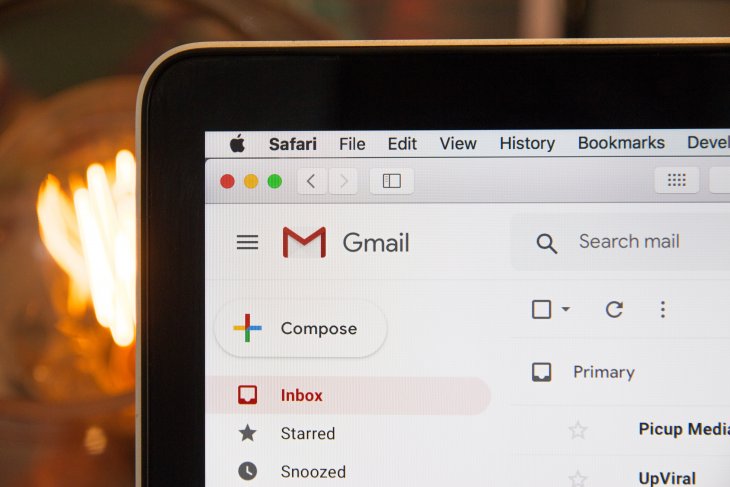With the coronavirus wreaking havoc on the global economy, maintaining a relationship with your audience is becoming more challenging than ever before.
With 69% of brands planning to reduce their ad spend in 2020, attracting new customers will be more difficult for most; which means that to survive, companies will need to turn their focus on the customers and prospects that they already have a relationship with.
If you have an email list, you don’t need to worry about how much it would cost to get a prospect to notice your brand online. You are always just a single message away from engaging a group of targeted prospects that have already shown an interest in what you have to offer.
However, bombarding your list with offers is unlikely to produce good results, so you need to be smart about how to do it if you want to run successful email marketing campaigns during the coronavirus pandemic.
In this article, let’s explore some of the most effective approaches for engaging your email list during the pandemic so that you not only keep making sales but set your business up for success in the future as well.
Don’t Overcomplicate Things
Email marketing is a relatively simple concept, but executing a successful campaign is becoming more complicated each year. That’s because there are so many options in terms of tools and platforms that less experienced businesses can become overwhelmed with the possibilities.
However, if you’re not sure how to revamp your email campaigns and don’t want to pay the premium costs for tracking tools, you can strip most of the expenses associated with email marketing if you get creative and aren’t afraid to use more straightforward approaches to reach your goals.
If you don’t want to use one of the premium email marketing solutions that are out there, you could instead opt for something simpler that can get the job done just as well. For instance, you could use a Gmail-based outreach automation tool to send out your messages to your subscriber list quickly and without the need for complicated platforms and processes.
You can also use free tracking tools for measuring how your emails are being opened and read, as well as at what rate your subscribers are clicking through to your landing pages.
Even though many businesses are considering cutting their marketing budgets, you can’t allow email marketing to take a back seat in your efforts as well. In the end, email marketing might be the most effective marketing tool that you have, especially if you already have a prospect or subscriber list that you can send relevant messages as soon as today.
Sure, technology can make things easier, but the most important thing is the messages that you send out; if your budget becomes a limiting factor, use the tools that are available and focus on crafting the most compelling offers possible.
Find the Right Tone
If you want your marketing during quarantine to be effective, you must be extra careful about the words that you use in your communications. Even everyday phrases that may have been part of your business vocabulary may now feel off or even tone-deaf.
Many businesses have failed to adjust their tone and have felt the repercussions by having their lists shrink, customers being put off by their communications, and their reputations taking a severe blow that will be hard to recover from.
The most important thing to consider when planning your emails is communication with empathy. We are living through some of the most turbulent and uncertain times in recent history, with many people unsure about their well-being, financial security, and future.
Sending out the typical sales promotional emails might backfire and make people angry instead of getting them in the mood to buy your products.
At the same time, you don’t want to start repeating the same phrases that businesses have been hammering home for the past few months. Phrases like “in these uncertain times” or “we share your concerns” may seem comforting, but they have lost their meaning because of repetition and have become a subject of ridicule.
Therefore, you should maintain a delicate balance between being authentic, being compassionate, and still getting your message across.
Avoid empty phrases that are supposed to sound compassionate, and instead try to appeal to the specific people that you are trying to reach, showing that you understand the challenges that they are facing and want to help make their lives easier.
Be Helpful
While being mindful of the words you use in your emails is important, it won’t matter much if the content itself is empty and superficial.
That’s actually another part of the aforementioned problem with many promotional emails during the coronavirus; businesses are using meaningless phrases that are supposed to sound compassionate and then jump straight into sales promotional messages that aren’t any different from before the coronavirus.
Unfortunately, merely acknowledging that we are dealing with a crisis isn’t enough, and you will need to show that your email isn’t just a way to boost sales (even if that is the end goal).
Instead, try to figure out how your products or services could make it easier for people to deal with coronavirus-related challenges. Even if you don’t think your products can help directly, they will usually either make people’s lives easier, more convenient, or simply bring them joy, which is all now more crucial than ever before.
Frame your selection in a way that helps people be more comfortable, or if you’re selling B2B products, how your products can make running business operations more efficient.
When you bring up the specific ways of how your products can be helpful, your emails won’t seem as blatant promotions but rather as useful suggestions that actually add value to people’s lives.
Review Your Automated Sequences
The importance of building an email list cannot be understated, especially if you take the time to develop automated sequences that can nurture leads and promote your products without any manual oversight.
However, even though drip campaigns might have been one of your biggest marketing assets before the coronavirus pandemic, you will need to carefully reevaluate whether they are still structured in a way that makes sense if you don’t want to see a significant dip in performance.
Messages that have been tested and refined over the years may have worked well under normal circumstances. Still, with people scrambling to get their lives in order, regular emails can not only be less effective but can actually cause a negative reaction.
The good news is that you don’t necessarily have to throw out everything that you have built over the years.
Sometimes, the necessary changes might be as simple as fine-tuning your product selection. Other times, you may have to reword your emails in a way that is more considerate.
You might also have to look at your segmentation, rethinking what types of emails you send to different parts of your audience, and considering whether you should rearrange which groups get which emails.
Your email subject lines might be the most critical component of your entire email marketing strategy, so make sure that you adjust them to reflect the current environment in your market and continually tweak to maximize open rates.
Finally, you may find that the frequency of your autoresponder campaigns should be revised as well, with less frequent but more focused messages that provide as much value as possible.
Offer Special Deals
During the coronavirus, people and businesses will likely be much more hesitant about spending money on non-essential items, so you will have to incentivize the proposition as much as possible if you want a significant percentage of your list to respond.

Adding regular discounts or running regular promotions might not cut it, as markets are becoming much more cautious about spending, so you will sometimes need to be willing to push your deals as far as they will go to maintain cash flow.
But while you could simply drop your prices with massive discounts, you can also try out a more subtle approach and instead focus on incentivizing the purchase itself.
While discounts can be very useful, you could try offering additional perks that could get some of the prospective buyers to consider your offer despite the current situation.
Adding things like free shipping, additional support, bonus features, or even bundle deals might get more people over the hump and into your customer list, which can help sustain your company over the next few months until the economy starts recovering.
Some companies even choose to run clearance sales at prices with minimal or no profit margins just to keep their customers engaged and buying. While this can backfire and somewhat devalue your brand, you could consider it if you feel it could help keep your subscribers anticipating your next email and eager to buy.


